|
header
|
 |
|
MENU
|
|
 |
GOURD CARVING
17 ~ 29
/ 03
2009
Gourd carving can be divided
into knife carving and gourd pyrography: the former
refers to the carving of characters or images on a gourd
with a knife, while the latter, originating from
the Qing Dynasty, employed heated needles and incense to
change the colour on the surface of the gourd in the
past but now uses a temperature-adjustable electric
soldering iron to produce
quality finished products.
Lan
Shengli, a native of Fuyang City, is deeply interested
in calligraphy and painting, and is highly skilled in
gourd carving. His works have been extensively featured
in the media in Mainland China, while his representative
works “Hollow Gourd” and “Portrait of Five Grains” have
won local folk craft competitions. |
| |
|
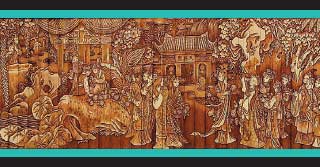 |
BAMBOO CARVING
31 / 03
~ 12
/ 04
2009
Bamboo carving refers to the
carving of a wide range of decorative patterns and characters on bamboo items,
or the carving on bamboo roots for various decorative purposes. By means of
bamboo carving, craftsmen seek to convey the innate character and cultural
significance of bamboo, thereby maintaining one of the country’s precious folk
handicraft traditions.
Fang Liping has been perfecting
the art of bamboo carving of ancient beauties for more than 20 years, during
which time she has mastered the artistic use of the knife. The ancient beauties
depicted in her works are distinguished by their vivid, life-like poses, and her
representative work “Panorama – Grand View Garden in a Dream of the Red Mansion”
was awarded the Innovation Prize of National Bamboo Craft. |
| |
|
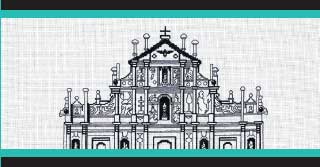 |
FOLK HAND
EMBROIDERY
31 / 03
~ 12
/ 04
2009
Hand embroidery is a folk
needlework handicraft from ancient times; in Wangjiang County, the art features
auspicious and festive images, highlighting the variable stitches, bright yet
unadorned colours, as well as profuse and balanced composition, reflecting
people’s hopes and yearning for well-being.
Wang Shifu is heir to the
Wangjiang hand embroidery tradition, listed as national intangible cultural
heritage. Not only is he dedicated to the investigation, gathering, and
collecting of hand-embroidered works, but his own pieces were hung in the Anhui
Auditorium in the Great Hall of the People for decorative purposes in 2000. |
| |
|
 |
WOOD CARVING
14~ 26 / 04
2009
Wood carving comprises different
skills such as sculpture, relief work, and hollow carving. Normally, the
delicate yet tenacious non-deforming materials - camphor wood, gingko, etc - are
selected for the carving of life-like figures, celestial beings, birds and
animals.
Ding Feng, a member of the
Committee of Carving Arts of China and director of the Anhui Folk Literature and
Arts Society, has inherited the essence of Anhui wood carving. His works have
garnered numerous awards and are favoured by the literati and scholars from both
home and abroad. |
| |
|
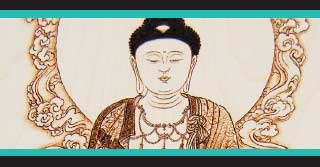 |
PYROGRAPHY
14~ 26 / 04
2009
Using iron as a pen and fire as
ink, pyrography paints on bamboo, wood, silk cloth and xuan paper,
employing the gradation of ink shades to achieve the quintessence of oil
painting in a delicate and realistic manner.
Zheng Xiaoliang, with more than
twenty years’ experience in the creation of pyrography, was awarded the ‘Folk
Crafts Artist’ by UNESCO and the Chinese Folk Literature and Arts Society in
1995. His elegant and delicate mini woodblock piece entitled “Portrait of 87
Immortals”, his small gourd work “500 Buddhist Saints”, as well as his “Portrait
of Shou Mountain” on xuan paper, render him a true pioneer in mini pyrography. |
| |
|
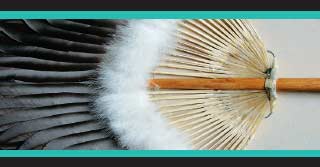 |
FEATHER FANS
28 / 04
~ 10
/ 05
2009
The manufacturing of feather fans
is a traditional handicraft from Sanhe, an old town surrounded by water in Anhui
Province. The Buddha hand-shaped eagle fur fan - made of finely picked fur grown
on the bird’s wing after artistic processing - presents the natural colour on
the fan surface with smooth lines and is considered the pinnacle of feather fan
art.
Ding Zhengquan is the third
generation of Sanhe feather fan masters. Sparing no effort in raising his
artistry to new levels, he has increased the quality of feather fan art, and his
works have won awards on numerous occasions at handicraft exhibitions in
Mainland China. |
| |
|
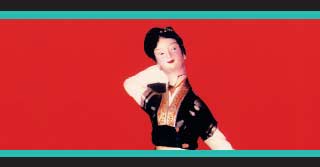 |
CLAY SCULPTURE
28 / 04 ~ 10 /
05
2009
Clay sculpture is an ancient
three dimensional art. Kneaded by hand to create different vivid shapes, clay
sculpture can be coloured or uncoloured. In 2006, clay sculpture was inscribed
on the 1st National Intangible Cultural Heritage List by the Chinese
State Council.
Zhu Lei has sculpted clay for
more than 20 years. Incorporating the techniques of Master Zhang, a famous clay
sculptor, his works represent the unique style of Fuyang coloured clay
sculpture, and have been displayed in Beijing, Shanghai, Nanjing, and Hefei. |
| |
|
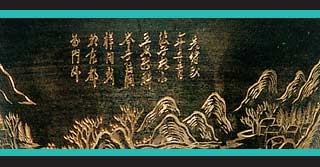 |
BRONZE CARVING
02 ~
11
/ 06
2009
Bronze carving is the carving of
characters or images on bronze ware with a knife. Due to the degree of
difficulty, engraved bronze products are rare, although they have always found
favour with the literati and scholars, in the form of bronze kettles, pots,
stationery, smoking sets, etc.
Born into a scholarly family in
Anhui Province, Du Ping studied under his father Du Mingnian, a famous woodcut
painter, from whom he acquired his consummate skill in the art. In November
2008, he displayed his bronze carvings at the Lou Kau Mansion, attracting much
favourable feedback and appreciation from artists and collectors in Macao. |
| |
|
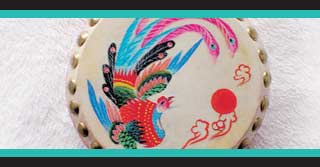 |
FENGYANG FLOWER DRUMS
02 ~
11
/ 06
2009
The Fengyang flower drum,
included in the 1st National Intangible Cultural Heritage List, is
the smallest performance drum in the country. It is characterised by Fengyang
phoenix paintingm on its surface, which not only highlights the exquisiteness of
the flower drum but presents the charm of phoenix painting. Hence, it has become
a very famous handicraft.
Li Yunsong is expert in Fengyang
phoenix painting, which is a tradition in his hometown. In addition to painting,
he is also dedicated to the research and improvement of the Fengyang flower drum
art, and his works are well known for their delicacy and beauty. |
| |
|
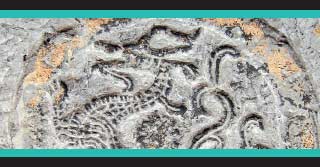 |
BRICK AND PORCELAIN CARVING
30 / 06~ 12 / 07
2009
Carved cyan bricks, featuring traditional
figures, landscapes and flowers, are among the most important elements in
ancient Chinese architecture. Porcelain carving, in turn, adopts and combines
Chinese calligraphy and Western-style realistic painting to produce either
coloured or uncoloured carvings.
In addition to his dedication to the creation of
literati calligraphy and painting, Zhou Jian has applied his unique carving
skills to pioneer the creation of Han Dynasty painting on bricks dating back to
the Han Dynasty some 1,800 years ago. Zhou has also conducted research on the
art of porcelain carving and pyrography, while his works are highly appreciated
and collected. |
| |
|
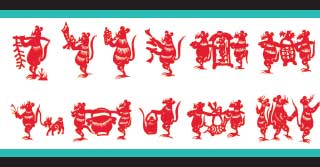 |
PAPER CUTTING
30 / 06~ 12 / 07
2009
The paper cutting of Fuyang has a
very long history. On the basis of traditional Fuyang paper cutting, Cheng has
drawn inspiration from it and introduced several innovative features. He often
adopts high quality red and xuan paper, making use of other paper, yarn,
and satin.
Cheng’s paper cutting – handed
down by Cheng Jianli, a paper cutting master – has exalted the art inherited
from his father. Some of his most representative works include “The Mouse
Wedding”, “The Eight Immortals Cross the Sea” and “A Eulogy of Olympic Gold
Medals”. |
| |
|
BACK
|
|

|
|